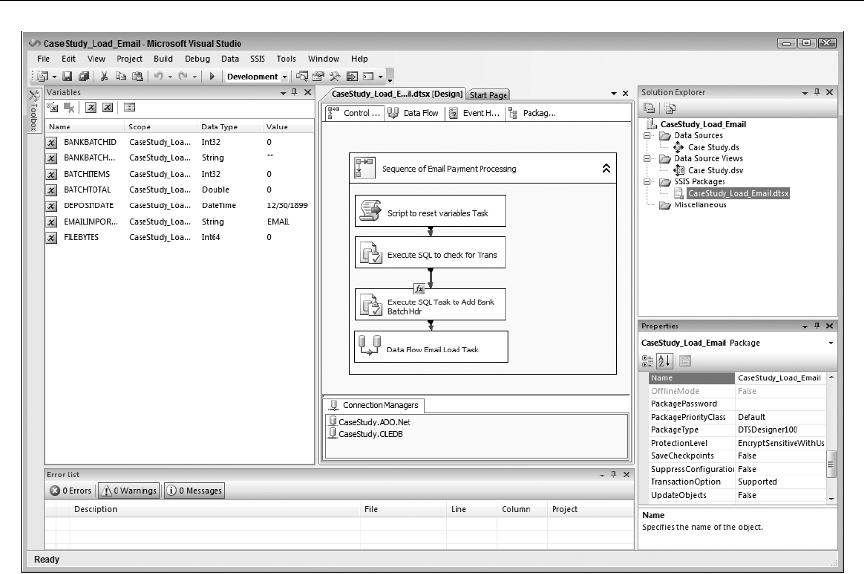Datasheet

Chapter 1: Welcome to SQL Server Integration Services
5
Though this development environment is similar to the legacy DTS Designer, the approach is completely
different. Most importantly, this is a collaborative development environment just like any Visual Studio
development effort with full source code management, version control, and multi - user project
management. In fact, SSIS was not developed in the context of a SQL Server instance like the DTS
Designer, and you don ’ t get to the SSIS IDE from within a particular SQL Server instance. SSIS solutions
are developed just like all other .NET development solutions, including being persisted to files — in this
case, XML file - based structures. You can even develop within the BIDS environment without a
connection to a SQL Server instance using the off - line mode. Once your solution is complete, it can be
built and deployed to one or multiple target SQL servers. These changes are crucial to establishing the
discipline and best practices of existing .NET development methodologies as you develop business
intelligence solutions. We ’ ll discuss this BIDS development interface in more detail later.
Architecture
Microsoft has truly established SSIS in SQL Server as a major player in the extraction, transformation,
and loading (ETL) market. Not only is SSIS technology a complete code rewrite from SQL Server 2000
DTS, but now it rivals other third - party ETL tools costing hundreds or thousands of dollars based on
how you scale the software — and it comes free with the purchase of SQL Server 2005 and later versions.
Free is great, but it can take you only so far if the feature set is minimal, or if the toolset has limited
usability, scalability, or enterprise performance limitations. But SSIS is for real, satisfying these typical
Figure 1 - 2
c01.indd 5c01.indd 5 8/28/08 12:01:15 PM8/28/08 12:01:15 PM










